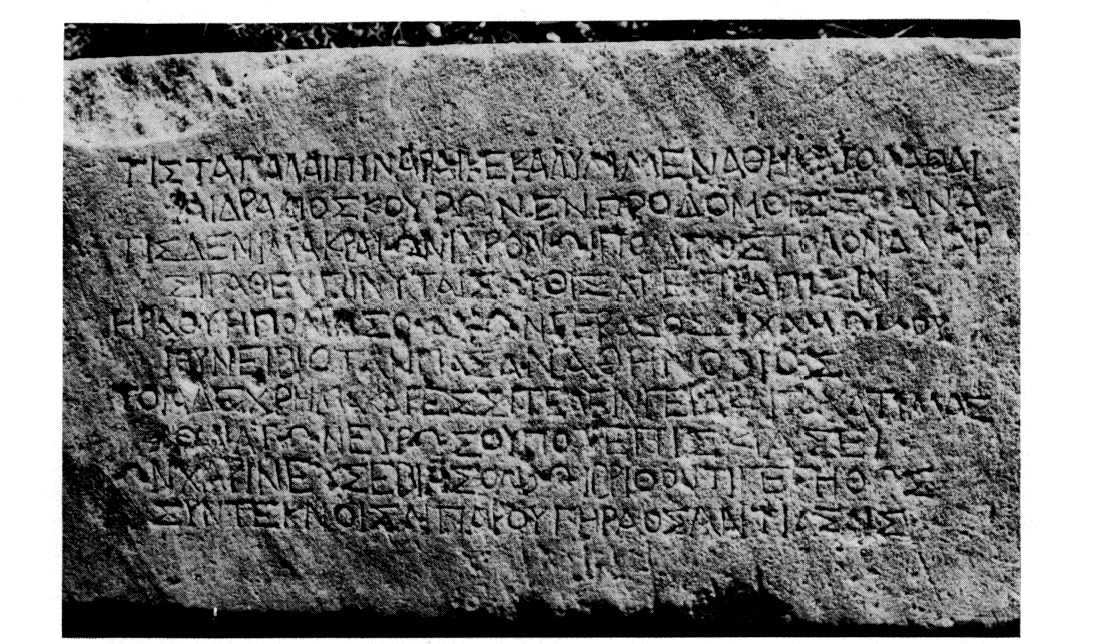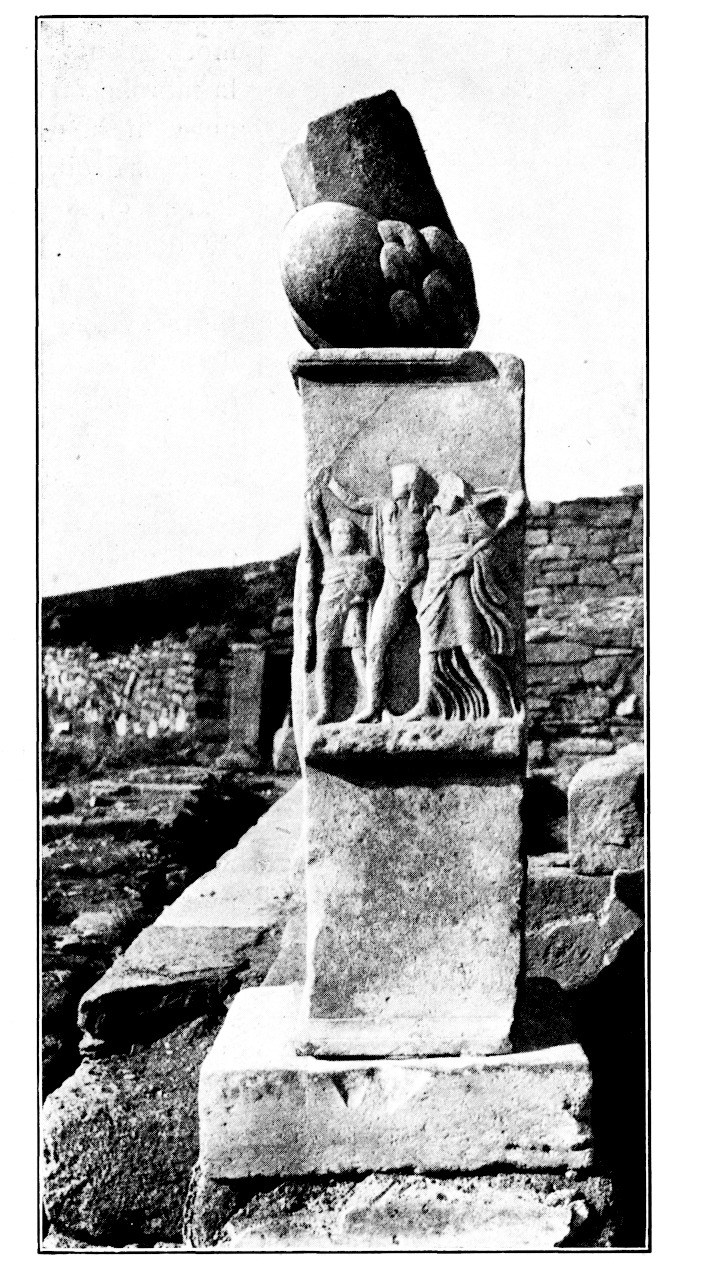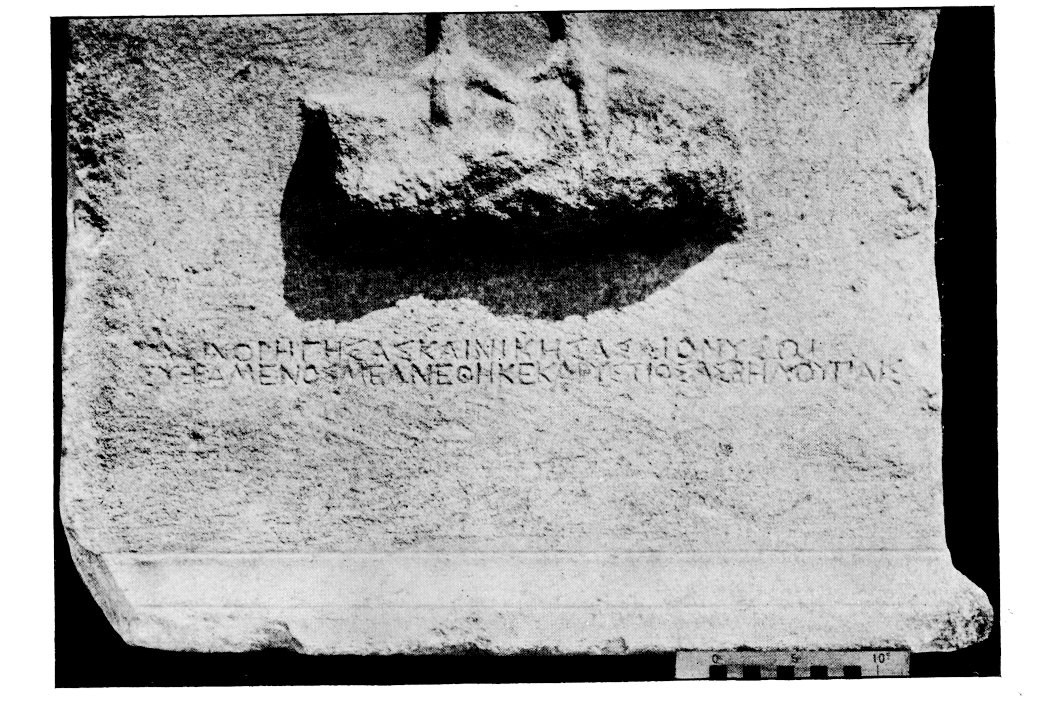Introduction
The epigrams
- found in Delos and dated between the third and the first century BCE;
- indirect evidence of authorship (an author is implied);
- hetero-referential compositions celebrating local deities or prominent personalities;
- epigrams in elegiac couplets or hexameters (at least two lines);
A total of 16 epigrams satisfies these criteria. These texts belong to three different types: the largest group is that of dedications to the Delian deities (eight texts); another group of epigrams concerns the dedication of statues celebrating notable individuals (four texts); the third and last group consists of agonistic dedications represented by choregic dedications (four texts).
1) Dedicatory epigrams to the gods
- inscription 1 = IG XI.4 1137 (dated ca. 300–250 BCE; found in the Prytaneum);
- inscription 2 = IG XI.4 1139 (dated to the mid-third century BCE; found in the thermal baths);
- inscription 3 = SEG XIX 522 = IG XI.4 1142 (dated to the mid-third century BCE; n.s.);
- inscription 4 (prose + epigram) = IG XI.4 1143 (dated to the mid-third century BCE; found in the Forum Area).
Even at a cursory inspection, it is possible to reflect on the historical value of this type of public verse-inscriptions of this type, as they provide information on public offices and who held them. In addition, inscriptions 1 and 2 are crucial from a religious point of view because they attest to the cult of Hestia in Delos. By contrast to the subsequent texts, which were commissioned by private individuals, dedications of this sort present a number of intriguing features. They can all be dated to the same period and are formulaic in their structure as much as in their language. They present: 1) the magistrate’s name and/or his patronymic (1 = l. 1 Τιμόθεμις … ὁ Δέξιδος; 2 = l. 1 Πολύβοιο [name]; 3 = l. 2 -ΛΟΣ κυδίμου Αὐτοκλέους; 4 = l. 1 Ἀθά[μβ]η̣τος παῖς Λυσιφάνους, l. 2 Πανταγόρας τ’ Εὐδίκου υἱός, l. 3 Ἀρχέπολις Λυσιξένου); 2) the use of a verb that indicates his specific office (1 = l. 2 ὅτ’ ἦρχεν; 2 = l. 3 στεφανηφόρος ἡνίκ’ ἐτάχθη; 3 = l. 1 [θ]ε̣ῶν στεφαναφορίαν; 4 = an implicit reference to the office of ἀγορανόμος); 3) the dedication to a god (1 = l. 1 Ἑστίαι; 2 = Ἑστίη; 3 = not specified; 4 = l. 1–2 Ἀγοραίωι | Ἑρμεῖ). All these epigrams are four verses long, except epigram 1, which has only three verses (two hexameters and one pentameter). These poems are not particularly interesting for their style or vocabulary, but they are useful from a historical point of view because they list magistrates’ names. It is clear that these epigrams are intended to give greater prestige to monuments dedicated to the gods. The poet, like the stone-cutter, is a simple craftsman and produces a poem devoid of originality, using an existing word pattern.
- inscription 5 = IG XI.4 1289 (dated to the third century BCE; found in the Serapeion);
- inscription 6 = SEG XIX 525 = IG XI.4 1289 (dated to the third century BCE; found in the sacred area dedicated to Inopus);
- inscription 7 = ID 2388 (dated after 166 BCE; n.s.);
- inscription 8 = ID 2548 (dated to the first century BCE; found in the shrine of the Dioscuri).
These poems in elegiacs were commissioned by private individuals for different occasions. The first, inscription 5, is a fragmentary prayer to Dionysus and Poseidon and we can only detect a reference to a storm (l. 2 οἶδμα ἅλιο[ν]). Inscription 7 is also a prayer, this time addressed by a man (l. 2 ὁ Βάλης) to the god Asclepius to ask for the healing of his wife. The text, damaged from verse 5, is engraved on a marble base together with a bas-relief depicting a reclining woman and a man sprinkling incense on an altar. Inscriptions 6 and 8 are of a different type: these are texts related to the offering of a statue—respectively, to Heracles and the Dioscuri. Within this group of dedicatory epigrams for deities, a lengthy epigram for the Dioscuri deserves special attention. It was engraved on a marble base at the beginning of the first century BCE, and is perfectly preserved:
 Figure 1. Marble-basis
Figure 1. Marble-basisID 2548 (from https://www.persee.fr/doc/bch_0007-4217_1934_num_58_1_2799#bch_0007-4217_1934_num_58_1_T1_0188_0000).
 Figure 2. Epigram for the Dioscuri (from https://www.persee.fr/doc/bch_0007-4217_1981_num_105_1_1930#bch_0007-4217_1981_num_105_1_T1_0046_0000).
Figure 2. Epigram for the Dioscuri (from https://www.persee.fr/doc/bch_0007-4217_1981_num_105_1_1930#bch_0007-4217_1981_num_105_1_T1_0046_0000).2) Honorific epigrams for prominent personalities
- inscription 1 = IG XI.4 1088 (dated to the third century BCE; found in the south Portico);
- inscription 2 = IG XI.4 1094 (dated to the third century BCE; inscribed on the Exedra of Soteles);
- inscription 3 = IG XI.4 1105 (dated to the third century BCE; found in the Sanctuary of Apollo);
- inscription 4 = ID 1853 (dated between 86 and 83 BCE; found in the southern part of the Portico of Philip).
All of these are remarkable poems, dedicated to people who played an important role in Delos between the third and the first centuries BCE. In all of them, we can observe that the layout is well planned, as each line of writing corresponds to a verse, with a minimum length of four lines (inscriptions 1 and 4) and a maximum one of ten (inscription 3). The study of the texts does not always make it possible to identify the person being celebrated or who commissioned the poem. Inscription 1 is quite damaged, and it is impossible to make out the name of the honorand but, according to Dillon and Palmer Baltes, [16] it may refer to a statue that the Delians commissioned for a queen. On the other hand, based on a comparison with other epigraphic sources, the Aichmokritos celebrated in inscription 2, should probably be identified with a son of Agatharchos, who was president of the Delian assembly, choregos of the Apollonia in 268 BCE, and epimeletes in 246 BCE. [17] In inscription 3, which I will discuss in a moment, Philetaerus is celebrated to commemorate his victory over the Gauls. Inscription 4, dated between 87 and 83 BCE, celebrates the Roman Sulla (l. 4 Σύλλου … ἀνθυπάτοιο) for taking care of the orphans of the civilians killed by Mithridates VI of Pontus during a bloody siege on the island in 88 BCE.
 Figure 3. Front view of the marble-base
Figure 3. Front view of the marble-baseIG XI.4 1105 (from http://lespierresquiparlent.free.fr/Delos-23.html).
 Figure 4. Epigram for Philetaerus, inscribed on the marble-base (from http://lespierresquiparlent.free.fr/Delos-23.html).
Figure 4. Epigram for Philetaerus, inscribed on the marble-base (from http://lespierresquiparlent.free.fr/Delos-23.html).3) Choregic verse-inscriptions
- inscription 1 = CEG II 838 = IG XI.4 1148 (dated to the late fourth / early third century BCE; found on the eastern side of the Portico of Antigonos);
- inscription 2 = IG XI.4 1163 (dated to the early third century BCE; found in the Forum Area) [24] ;
- inscription 3 = IG XI.4 1149 (dated ca. 300–250 BCE; inscribed on the Exedra of Inopus);
- inscription 4 = SEG XIX 523 = IG XI.4 1150 (dated to the second century BCE; found in the Theater).
To better understand what kind of texts we are dealing with, let us briefly examine the verse-inscription CEG II 838 = IG XI.4 1148: [25]
 Figure 5. Monument of Karystios (from https://www.persee.fr/doc/bch_0007-4217_1907_num_31_1_3269).
Figure 5. Monument of Karystios (from https://www.persee.fr/doc/bch_0007-4217_1907_num_31_1_3269). Figure 6. Choregic dedication:
Figure 6. Choregic dedication:IG XI.4 1148 (from https://www.persee.fr/doc/bch_0007-4217_1907_num_31_1_3266#bch_0007-4217_1907_num_31_1_T1_0430_0001).
